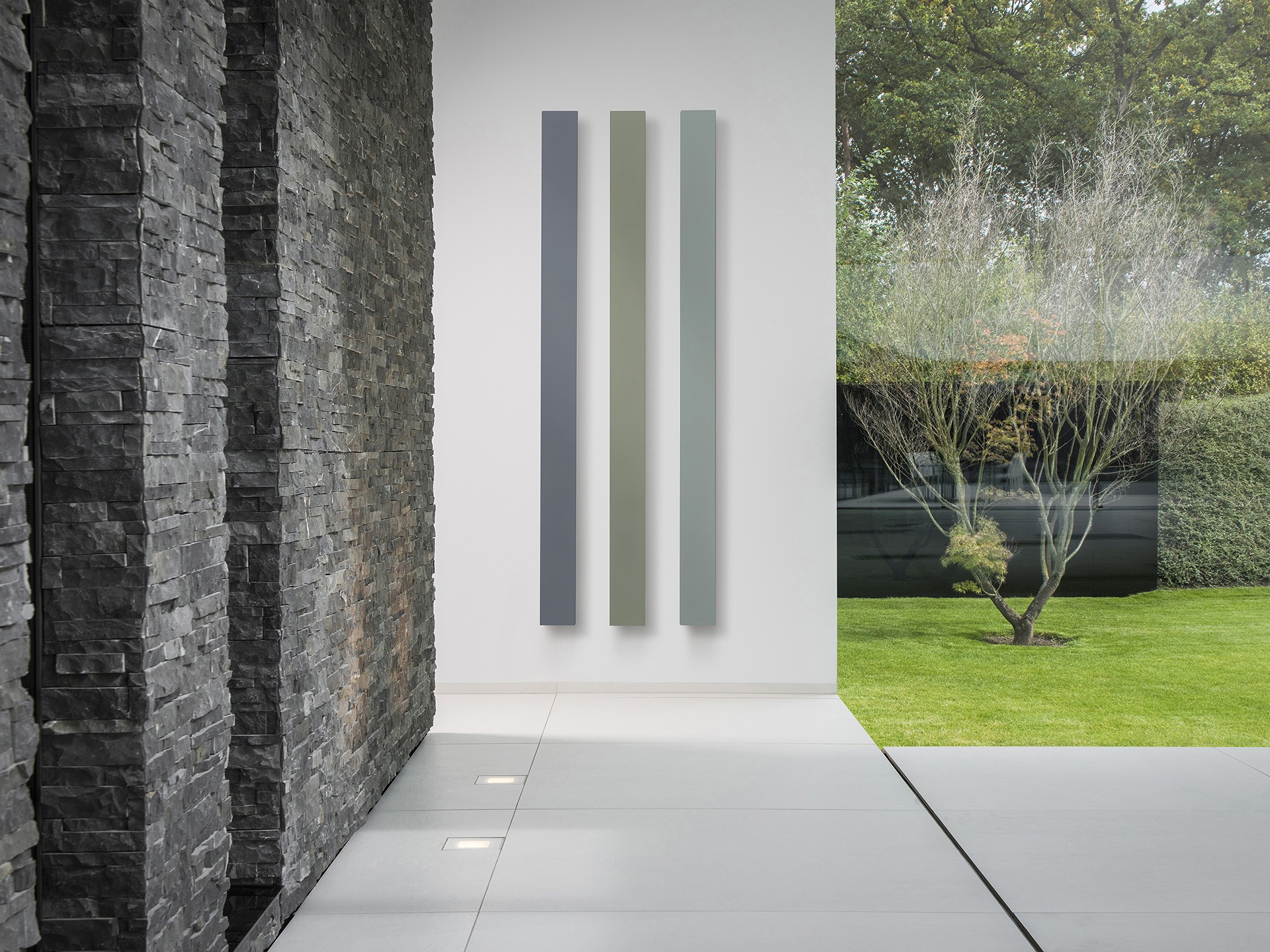Electric radiators buying guide
Electric radiators remain a good choice for some spaces. We explain why and suggest places where they might be just what you need
All the attention in the world of heating is firmly focused on heat pumps, and the big decision for anyone replacing or installing a heating system today is focused on whether or not to adapt the low-carbon technology. But there are awkward rooms in many homes that remain stubbornly out of reach of any central heating system, no matter how it’s powered. And for those hard-to-reach places – garden offices, conservatories and the like- electric radiators could be just the answer. Here’s why, and what you need to consider when choosing electric radiators.

- Image credit: The Radiator Centre
Electric radiators are individual heaters best suited to providing short-term heat to individual rooms that might prove difficult or costly to plumb into a wet (hydronic) central-heating system. Think: garden offices, garden rooms, workshops, that kind of thing.
Types of electric radiator
There are three different types of electric radiator, each with different properties:
- thermal fluid (oil-filled) radiators: these usually have a recognisable vertical-column design. They take a bit longer to warm up than the other types and are slower to cool down; can be used in bathrooms
- dry thermal (oil-free) radiators: contain metal heating elements, which makes them highly responsive, quick to heat up and cool down; perfect for on-demand heating
- dry stone (ceramic) radiators: quick to heat up but slow to cool down. Produce a higher proportion of radiant heat than most radiators. Good for large and hard-to-heat spaces.
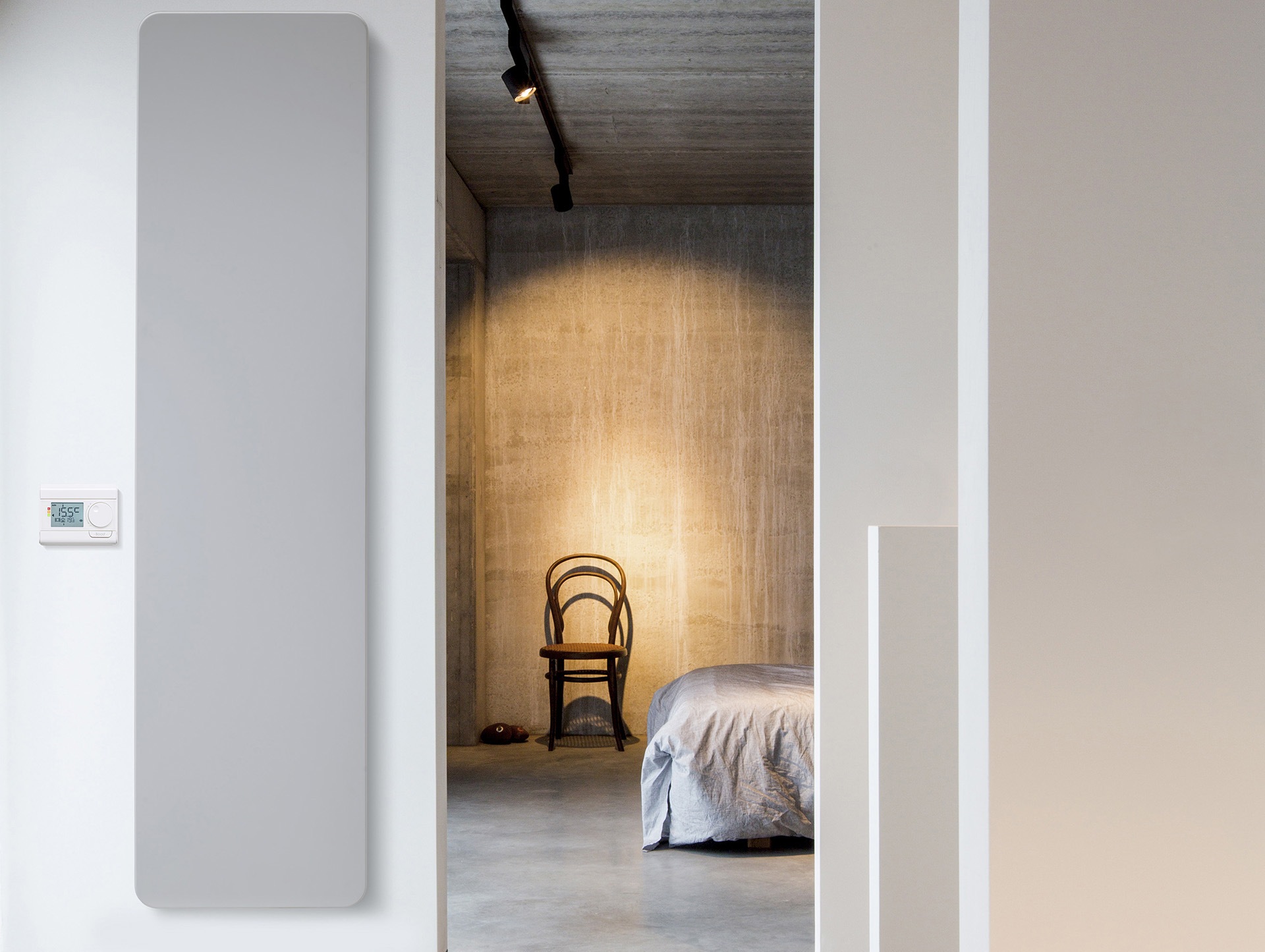
- Image credit: The Radiator Centre
How radiators heat space
Electric radiators heat up quickly, so they will heat a space quickly. Despite their name, radiators heat space through a mix of convection and radiation. Radiated heat is direct heat, and this accounts for about a third of the heat provided by an electric rad. The other two-thirds is convected heat that warms the room by setting up a convection current in the air. Air near the heater is warmed up and gets lighter as it warms, rising as it does. Cooler, denser air replaces it, and gets warmed too in turn. Meanwhile, the warmed air near the ceiling starts to cool and sinks back down to ground level. A current is set up circulating warm air round the whole room.
Installation
Depending on the model and where you want to put it, electric radiators can be very easy to install. Some you can just unbox, fix to the wall, and plug in to a regular socket. Others need to be wired into the mains by a qualified electrician. If you’re planning on putting in a lot of electric radiators, you need to be sure you’re not going to overload your circuit, and should definitely consult a professional.
Unlike gas heating, electric radiators are a low-maintenance choice that doesn’t require regular servicing.
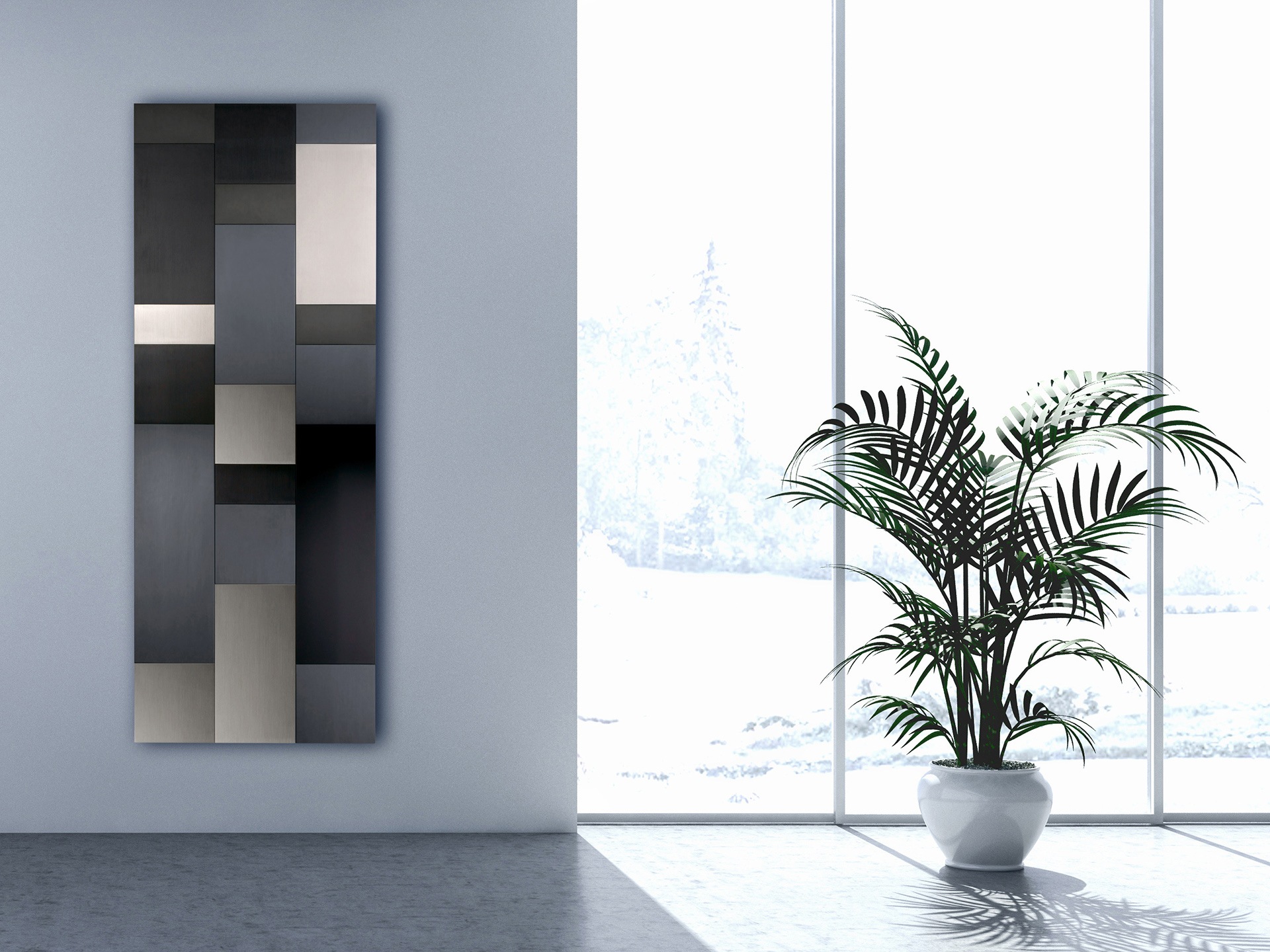
- Image credit: The Radiator Centre
Sustainability
Electricity is a lower carbon heating choice than gas, which is, of course, a fossil fuel. Ultimately, the carbon footprint of an electric heater depends on how the electricity used to power it is generated. At the moment, a significant and increasing proportion of UK electricity comes from renewable sources, which makes electricity a pretty sustainable choice.
Heat-pump heating system are significantly more efficient than electric radiators, converting the electricity they use into three or four times the amount of heat energy, which is why electric radiators are a solution best suited for hard-to-connect rooms. Another low-carbon option, though, would be to power electric radiators from solar panels (via an inverter to convert the DC electricity you generate into AC electricity your appliances can use).
Freestanding or wall-mounted
Electric radiators can be freestanding or wall-mounted. You can buy legs as an extra add-on to allow some wall-mounted radiators to become freestanding. Generally, wall mounting is safer, as there is no danger of the radiator getting knocked over.

- Image credit: The Radiator Centre
What wattage?
When buying an electric radiator, look for ‘heats up to room size Xm2’ in the product info. Alternatively, lots of retailers have online calculators to help you work out what size radiator you will need to heat a room. You just put in the size of the room, its height, and information about how well insulated it is, how many windows etc, and the site will calculate what wattage of radiator you need.
Style
There are electric radiators to suit all budgets and tastes. Style wise, the cheapest option is very simple white rads in either traditional or contemporary design. At the other end of the scale are high-end statement pieces that look more like works of art.
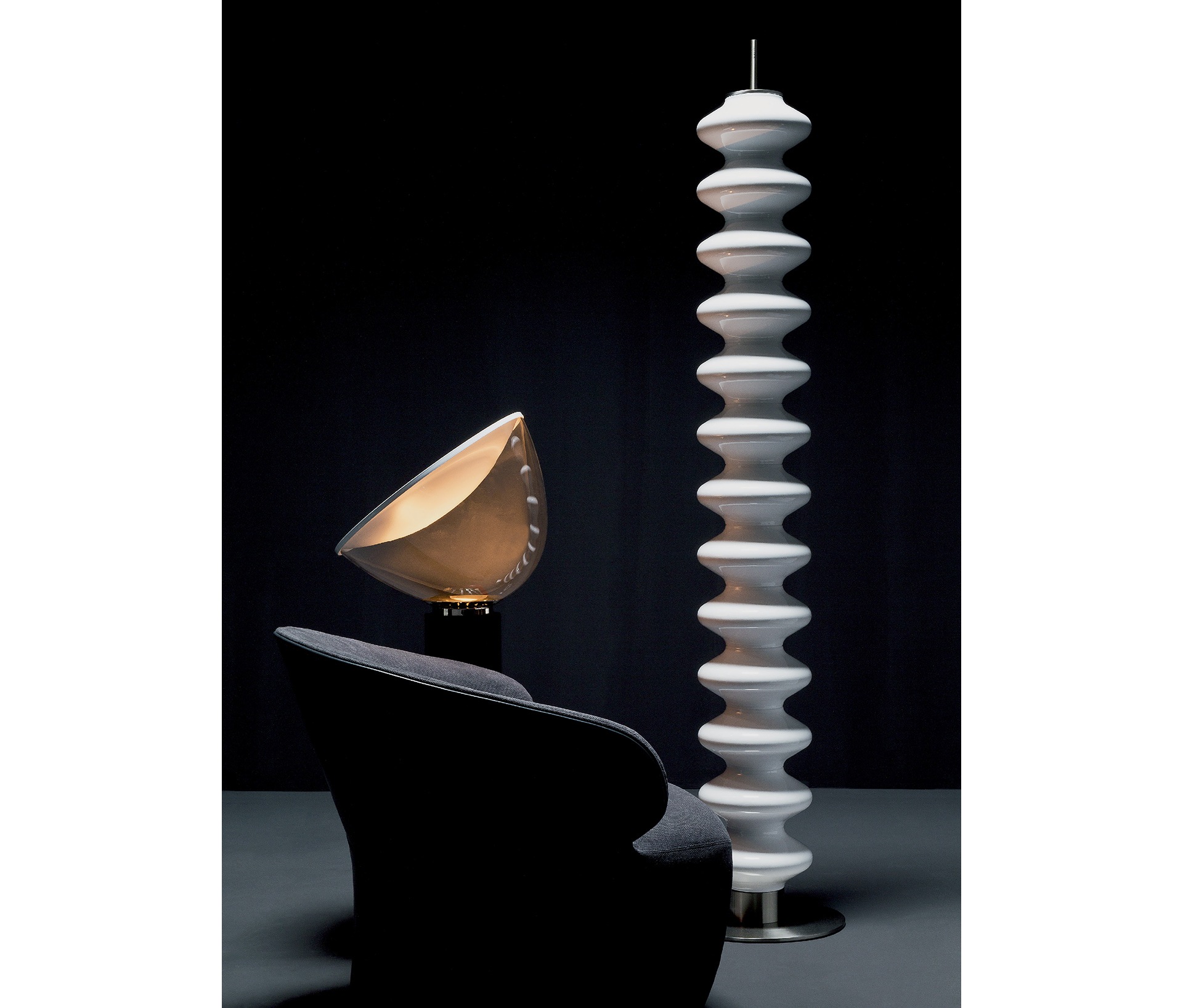
- Image credit: The Radiator Centre
One key choice you need to make is between a horizontal or vertical model. Horizontal radiators come in both traditional and modern designs and will direct most of their radiant heat out into areas near ground level where people are. Look out for conservatory radiators specially designed to fit on the short walls below the windows in conservatories. If wall space is limited or you want a really striking art-like design, though, you might well be drawn to the cool, vertical radiators like the ones in some of the pictures accompanying this piece.

- Image credit: The Radiator Centre
Smart radiators
You can get electric radiators with all kinds of smart features, such as:
- 24/7 programming so your radiators only come on when you need them
- Wi-Fi connectivity that lets you control them through an app
- voice control
- open-window detection
- adaptive start so that you can set the radiator to come on a short while before you will be using the room, to warm it up
- thermostat control so that the heater turns off when the room reaches the temperature you desire
These all help you make the most efficient use of your radiators by only turning them on when you need them. Generally, the thermostats on electric radiators are very accurate, switching off the power supply to the rad as soon as the room reaches the required temperature.
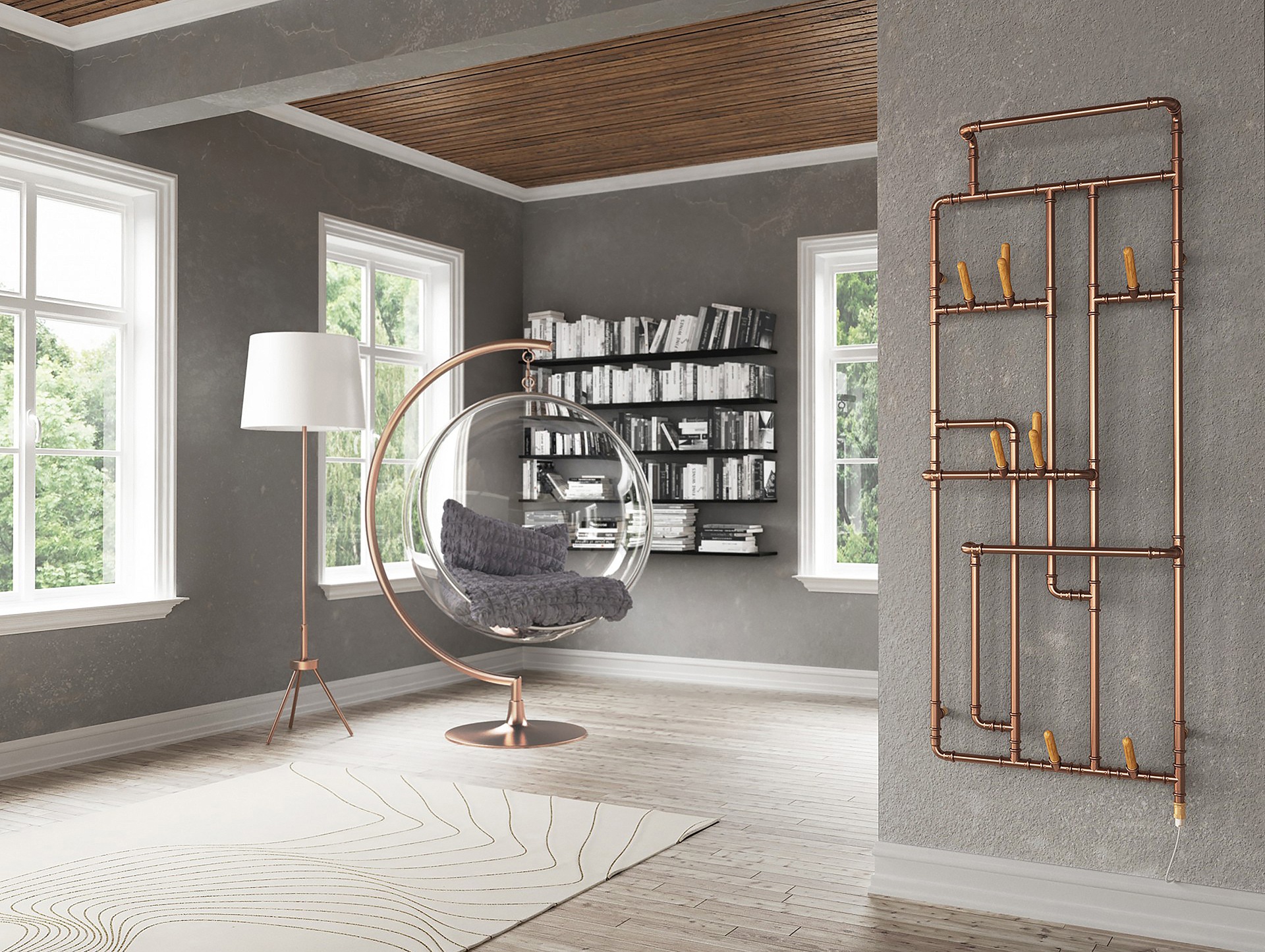
- Image credit: The Radiator Centre
Towel rails
Towel rails are a popular use of electric radiators in bathrooms. There are some super cool ones around now that look like ladders leaning against the wall. If you’re planning on putting an electric radiator in a bathroom, you need to check it’s IP rating.
The IP code of a product categorises how well it is protected against foreign bodies/particles and water getting into it. A rating usually consists of two numbers eg IP23. The first number shows how well a product is protected against foreign objects – from fingers to dust – getting into the works. The second shows how waterproof it is. And, the higher the number, the better the protection.
For a radiator going in a bathroom, the rating you need will depend on where in the bathroom you want to put the rad. The IET wiring regulations, the rules followed by UK electricians, divide bathrooms into different zones according to how close they are to water sources, zone 0 being the closest, and zone 1 being the area above the bath and shower. There are different minimum radiator IP ratings for different zones the bathroom. For example, a rad in zone 2 (within 0.6m of zone 1) needs a minimum IP rating of IPX4. You cannot use plug-in electric radiators in bathrooms, they must be properly wired in by a qualified electrician.
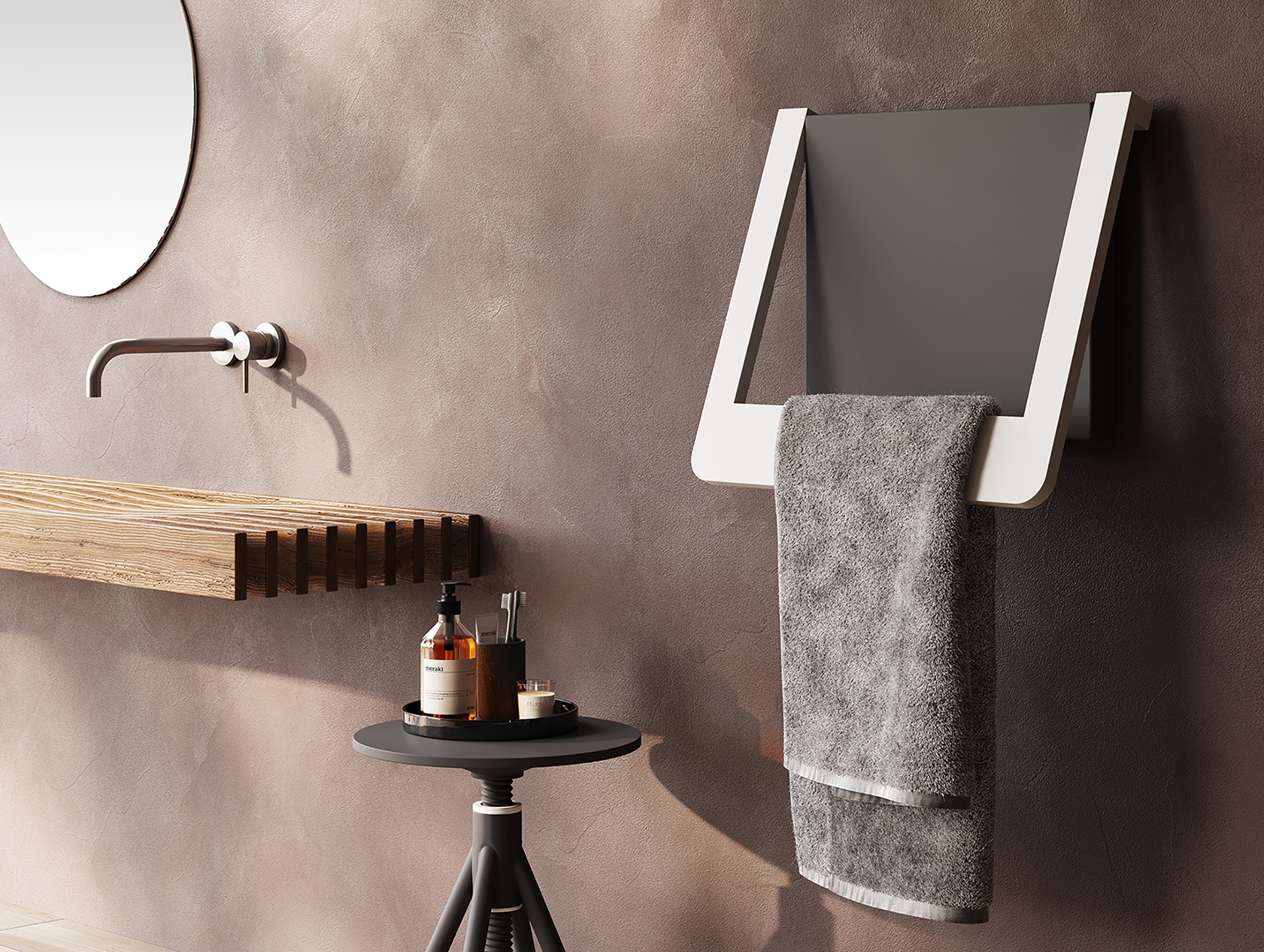
- Image credit: The Radiator Centre
Running costs
Electric radiators are more efficient than traditional wet (hydronic) radiators powered by gas. In fact, they are almost 100% efficient, which means they convert pretty much all the energy they use into heat. But that doesn’t necessarily translate into cheap running costs, because electricity is more expensive than the gas used to power most central-heating systems. The Achilles heel of electric radiators is their relatively expensive running cost. And this is the reason they are usually recommended for occasional use in the odd room. It’s nothing to do with how well they function – which is very well – it’s simply a matter of cost.
From April 2021, the average price of gas under the price cap is 6.04p per kWh, while the average cost of electricity is about four times that at 24.50p per kWh. The basic running cost of an electric heater is achieved by multiplying its wattage in kW by the unit price to get the running cost per hour. For example, a 2kW heater would cost 49p per hour to run. A lot of information on the web will tell you to work out the daily running cost by multiplying the hourly cost by the number of hours the heater is turned on for. In our example, if the heater was used for five hours per day, by those calculations, the heater would cost £2.45 a day to run.
This kind of calculation doesn’t hold up under close scrutiny, and assume that the heater will be on, running at full capacity for those five hours. In reality, a dumb electric heater that doesn’t have a thermostat will be manually turned off when the room feels warm, and a heater with a thermostat will cycle on and off during its in-use period. In both cases, the heater is not on permanently.
The other issue with this kind of simple calculation is that using them would suggest that a 1kW heater costs half as much to run than a 2kW heater. In reality, there are more factors that come into play, and the room size has a part to play. In a room that a 1kW heater is capable of keeping warm, a 2kW heater will hit the target temperature faster, so will be on for less time; the overall running cost will be the same.
It’s more important to consider the total heat output required, as we have done in our guide to electric heaters vs central heating for a single room. Each home and room has its own variances, but a typical electric heater will cost between on- third and a half of the cost of central heating for an entire home. In simple terms, standard electric heating is expensive to run, which is why it’s best suited for areas where it’s hard or expensive to get central heating to reach.
Lastly, don’t buy a lower-rated electric heater on the basis that it will work out cheaper to run; it’s important to buy a heater correctly specified to warm the size of room you want to put it in.
Electric radiators vs infrared heaters
Infrared heaters are another electric option worth looking at for similar situations. Infrared heaters give off radiant heat, so they are very efficient and good at heating small areas. Electric radiators are better at heating larger rooms. You can find out more in our article about infrared electric heaters here.
Electric radiators vs electric heaters
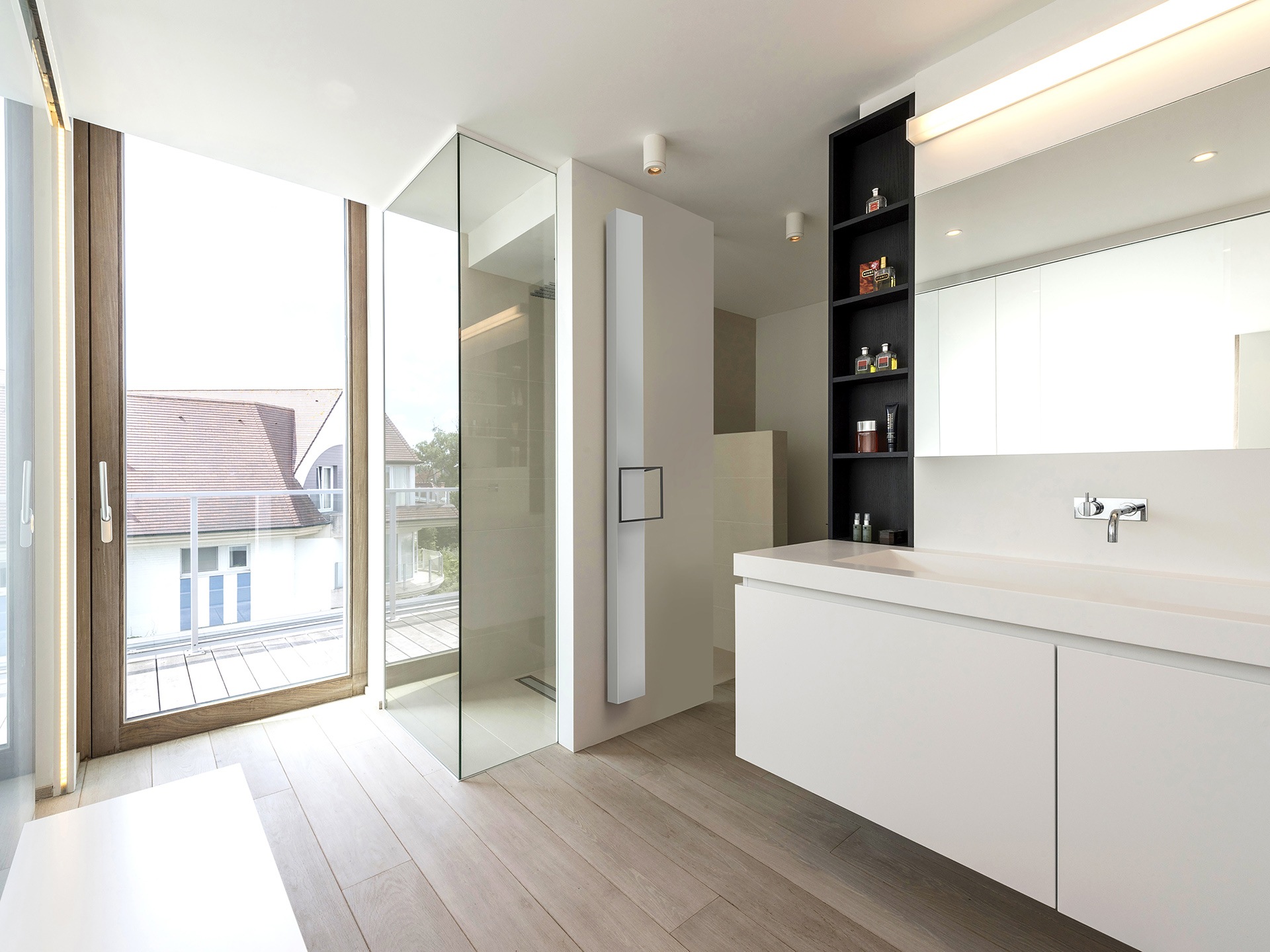
- Image creditL The Radiator Centre
There are various cheaper options you can also use as occasional heaters. The choices include fan heaters (which can be noisy and expensive to run), oil-filled portable radiators (which are unwieldy and heavy to move), portable ceramic heaters (which only heat a small area) and halogen heaters (which also only heat where they are pointed). These are all low-cost purchases that have their role. But all are at risk of being knocked over by children are pets. Electric radiators are considerably more costly to buy, but they offer a more permanent, long-term heating solution for larger rooms.

